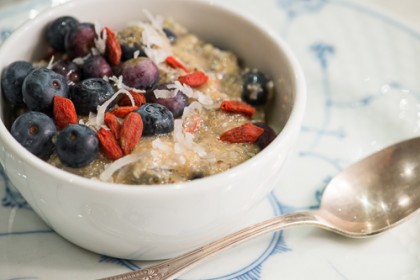At this point, an NYU trained neurologist who had quit neurology to become a homeopathic doctor (when her kids had celiac and mainstream medicine was not helping them) told me that the molecules for gluten and dairy were similar so you need to remove them both (as well as soy) in order for them to get better. She explained that sometimes the immune system sees the dairy molecule and thinks it is gluten or visa versa so you need to remove both. Then after a period without both gluten and dairy, when the immune system is working better it will be able to differentiate the two and you might be able to add dairy back in if gluten is the main allergy. It was an explanation–from a doctor– but not a definitive test. So, I kept searching looking for proof. My son was both gluten and dairy free–so a positive test wouldn’t have made any difference practically–but I wanted answers. I wanted to understand.
Testing for intolerances is very complicated because although allergists can test for an IgE allergy to milk–an intolerance like the one my son had won’t show up on typical allergy testing because it is not the same pathway as an allergy. With an intolerance you won’t die from ingesting the food. And, because of our “death and disease” model–food intolerances often aren’t on the radar of mainstream doctors.
There are some alternative tests that can help reveal whether dairy is an issue–but a negative test does not necessarily mean that you don’t have a problem with dairy–it can also mean that this particular test didn’t show it. (More on Testing for Dairy tomorrow.)
Once, Dr. Teich, an environmental allergist, did a skin prick test for dairy and the results were startling. My three year old went from being a talkative, inquisitive boy to a boy who was quite out of it, deep within himself, lost for a few moments until Dr. Teich used the antidote. and he returned to his chatty normal self. Although we had seen profound reactions to dairy before, it was startling to see neurological reaction provoked then reversed by a doctor over half an hour appointment. The test was a confirmation of his severe reaction to dairy–but it wasn’t an explanation of what was causing the reaction to dairy. Dr. Teich does the testing to try to use drops to eliminate the allergies but we decided against the treatment because his reaction was so severe.
I think I continued to search for a few years for an explanation for my son’s reaction to dairy. Finally, when I had given up searching for an answer, a physician’s assistant, Scott Smith, at Full Potential Wellness Center did a test for folate antibodies which came up positive. I had taken him to Scott to try to figure out why he had cradle cap–not for his dairy issue. But hearing his history Scott Smith ordered the test. Folate antibodies, he explained, are antibodies that attack the brain–and they find these antibodies increase in the presence of MILK. If you have the folate antibodies then you need to do two things–give up milk/casein, remove all folic acid from the diet and supplement with folate. Both my son and I were both positive. FINALLY A TEST THAT EXPLAINED his milk allergy–and a treatment. A treatment that worked. The test was great because not only did it explain but it actually offered more than just “be dairy free.”
When we removed every last trace of dairy and followed the recommendations about discontinuing the multi (which contained folic acid) and adding in folate–he went from being 85% better to 100% better. We did not use the dosages that were recommended–but much lower dosages.
It is interesting that we finally got our answer when we had given up searching.
•••Also, we figured out about the same time that the probiotics we were using were cultured on dairy. We learned the hard way, although food might be labelled “dairy free” it still might have traces of casein in it. When we switched to a probiotic that was not cultured on dairy he no longer needed enzymes with every meal. We still use enzymes when we eat out but nice that he no longer needs them.



